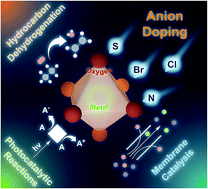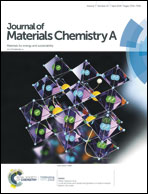Recent advances in anion-doped metal oxides for catalytic applications
Abstract
Metal oxides have been extensively applied as heterogeneous catalysts in various chemical processes, including conventional heterogeneous catalysis, photocatalysis, and membrane catalysis. The catalytic performance of an oxide heterogeneous catalyst can be affected by its lattice structure, electronic structure, surface properties, bulk defects, and metal–oxygen bond strength. As a catalytic membrane, the catalytic performance of an oxide may also strongly depend on its oxygen-ion diffusion properties. Cation doping has been extensively adopted to tailor, both physically and chemically, the properties of oxide materials, such as lattice structure, electronic structure, lattice defects and diffusion behavior, so as to alter their catalytic performance for various redox reactions. Very recently, anion doping into the oxygen site has emerged as a new strategy for tuning the chemical and physical properties of metal oxides, and thus for regulating their catalytic behavior. Here, a timely review of recent progress in the development of advanced oxide catalysts based on oxygen-site anion doping is provided. Emphasis is given to the effect of doping anions into the metal oxide lattice on the physical and chemical properties, and consequently the performance in various catalytic applications, including the oxidative dehydrogenation of ethane (ODE), oxidative coupling of methane (OCM), photocatalytic reduction of dyes, and ceramic membrane-based oxygen separation. The aim of the current review is to offer some insightful perspectives to guide the development of functional oxide materials based on the anion site doping strategy toward application in heterogeneous catalysis. The knowledge gained here may also be useful for other application fields, such as electrochemical energy storage devices and sensors.

- This article is part of the themed collection: Recent Review Articles


 Please wait while we load your content...
Please wait while we load your content...